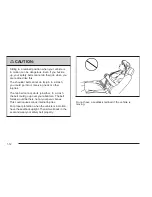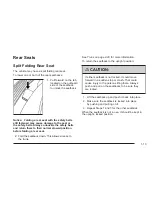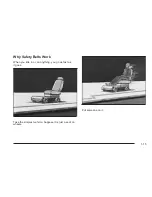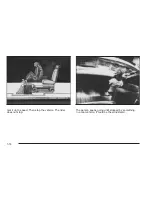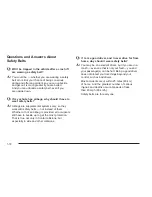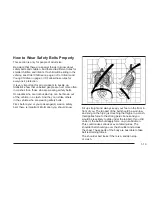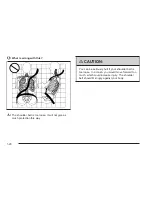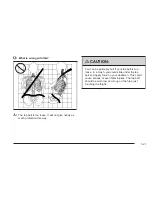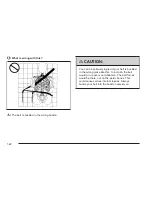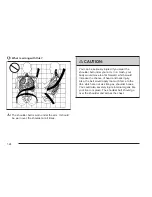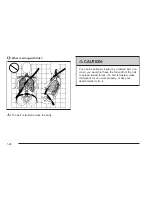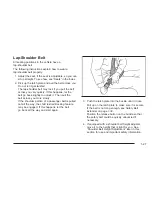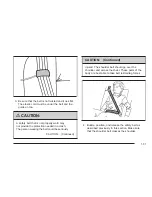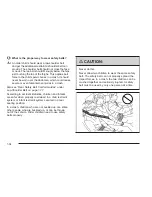
How to Wear Safety Belts Properly
This section is only for people of adult size.
Be aware that there are special things to know about
safety belts and children. And there are different rules for
smaller children and infants. If a child will be riding in the
vehicle, see Older Children on page 1-33 or Infants and
Young Children on page 1-36. Follow those rules for
everyone’s protection.
It is very important for all occupants to buckle up.
Statistics show that unbelted people are hurt more often
in crashes than those who are wearing safety belts.
Occupants who are not buckled up can be thrown out
of the vehicle in a crash. And they can strike others
in the vehicle who are wearing safety belts.
First, before you or your passenger(s) wear a safety
belt, there is important information you should know.
Sit up straight and always keep your feet on the floor in
front of you. The lap part of the belt should be worn low
and snug on the hips, just touching the thighs. In a crash,
this applies force to the strong pelvic bones and you
would be less likely to slide under the lap belt. If you slid
under it, the belt would apply force on your abdomen.
This could cause serious or even fatal injuries. The
shoulder belt should go over the shoulder and across
the chest. These parts of the body are best able to take
belt restraining forces.
The shoulder belt locks if there is a sudden stop
or crash.
1-19
Summary of Contents for 2009 CTS
Page 6: ...NOTES vi...
Page 146: ...NOTES 2 68...
Page 149: ...NOTES 3 3...
Page 150: ...Instrument Panel Overview CTS Shown CTS V Similar 3 4...
Page 178: ...United States V Series Automatic Transmission Cluster shown Manual and Canada similar 3 32...
Page 322: ...CTS V When you open the hood on the 6 2L Super Charged engine you will see the following 5 16...








